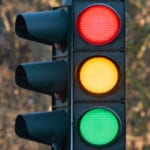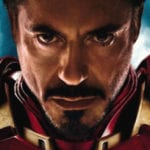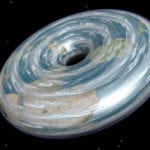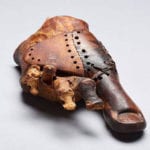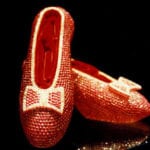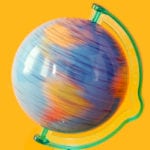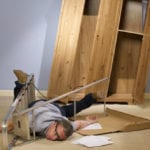 Mysteries
Mysteries  Mysteries
Mysteries  History
History 10 Surprising Stories About the Texas Rangers
 Humans
Humans 10 Philosophers Who Were Driven Mad by Their Own Theories
 Miscellaneous
Miscellaneous 10 Video-Game-Worthy Weapons and Armors from History
 Weird Stuff
Weird Stuff 10 Psychics Who Accurately Predicted Wartime Events
 The Arts
The Arts 10 Pieces of Art Inspired by a Broken Heart
 Health
Health 10 Science Fiction-Sounding New Medical Treatments
 History
History 10 Surprising Facts About the Father of Submarine Warfare
 Space
Space Ten Astonishing New Insights into Alien Worlds
 Weird Stuff
Weird Stuff 10 Bizarre Summer Solstice Rituals Still Practiced Today
 Mysteries
Mysteries Top 10 Haunting Facts About the Ghost Ship MV Alta
 History
History 10 Surprising Stories About the Texas Rangers
 Humans
Humans 10 Philosophers Who Were Driven Mad by Their Own Theories
Who's Behind Listverse?

Jamie Frater
Head Editor
Jamie founded Listverse due to an insatiable desire to share fascinating, obscure, and bizarre facts. He has been a guest speaker on numerous national radio and television stations and is a five time published author.
More About Us Miscellaneous
Miscellaneous 10 Video-Game-Worthy Weapons and Armors from History
 Weird Stuff
Weird Stuff 10 Psychics Who Accurately Predicted Wartime Events
 The Arts
The Arts 10 Pieces of Art Inspired by a Broken Heart
 Health
Health 10 Science Fiction-Sounding New Medical Treatments
 History
History 10 Surprising Facts About the Father of Submarine Warfare
 Space
Space Ten Astonishing New Insights into Alien Worlds
 Weird Stuff
Weird Stuff 10 Bizarre Summer Solstice Rituals Still Practiced Today
10 Explanations Of The Shapes Used For Everyday Things
We probably do not pay attention to the shapes of lots of things we see around us every day. This is even though we would probably realize something was amiss if we saw them in a different shape. Imagine if you saw a circular television or a square coin.
The shapes of most everyday items are not random as you might think. Sugar is always in cubes, televisions are rectangular, and doughnuts are round for a reason. Most of the time, the shape is selected for practical reasons. Sometimes, they also have one or two things to do with the history of the product.
10 Why Sugar Is In Cubes
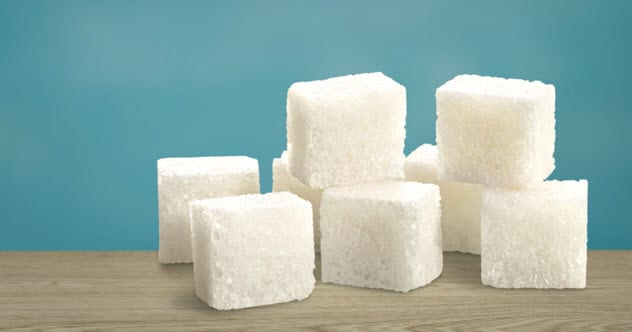 Sugar used to be sold in tall, hardened cones called sugar loaves. People went through quite an ordeal to get sugar ready for tea. Users first had to break the sugar apart with hammers or mallets that had chisels. Later, someone came up with the pliers-like sugar nippers to cut the hardened sugar into lumps.[1]
Sugar used to be sold in tall, hardened cones called sugar loaves. People went through quite an ordeal to get sugar ready for tea. Users first had to break the sugar apart with hammers or mallets that had chisels. Later, someone came up with the pliers-like sugar nippers to cut the hardened sugar into lumps.[1]
Users who preferred granulated sugar shattered the lumps with a mortar and pestle or spice mill. Some just saved themselves all the trouble and inserted the whole cone into their cup of tea. Part of it melted into the tea, and they dried the rest for future use. Lucky buyers could also purchase already-broken sugar in lumps, which was sold by weight.
The whole problem with sugar came to a head in the 1840s when Juliana Rad sliced her finger while cutting sugar. Juliana was the wife of Jakub Krystof Rad, who owned a sugar mill. She complained to Jakub, asking why he could not make sugar that would fit in a cup and save people all the trouble. This made Jakub invent the first press that made sugar into cubes.
9 Why American Football Is A Prolate Spheroid
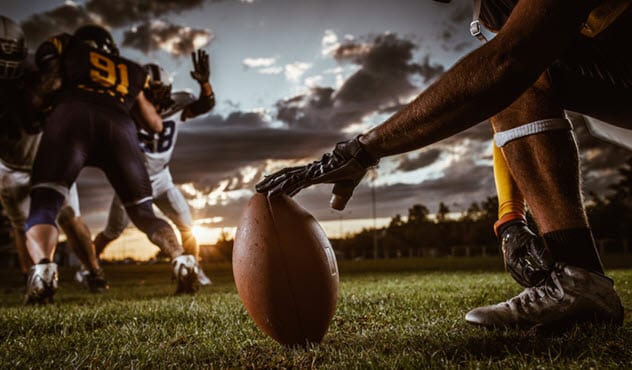
American football is played with a prolate spheroid ball because that is the shape of a pig’s bladder. The first American footballs were made of inflated pig bladders. Later, people started covering the bladder with stitched leather pieces. The balls still have those stitches, although they are only added to improve handling during play nowadays.[2]
The shape of the ball did not change when the pig bladders were replaced with rubber in the late 1800s because the footballs were easier to throw that way. However, the change came at a cost. The balls are hard to pick up when they fall. It is also difficult to determine where they will land after a bounce, making it a nightmare for players and game developers.
Game developers often encounter difficulties when determining how to program the movements of the ball. While a regular soccer ball will go in one direction when it bounces, an American football can go in 30 different directions. Interestingly, early soccer balls were made of pig bladders but became rounder after the invention of rubber because they were easier to kick that way.
8 Why Airplane Windows Are Rounded
Airplane windows are round (or oval) because square windows become stressed when the cabin is pressurized. The continuous pressurization and depressurization of the airplane can cause the window to explode midflight, crashing the airplane.
The first commercial jetliner was the British de Havilland Comet. It launched in the 1950s with square windows. However, that turned fatal after two airplanes broke apart midair in 1953, killing 56 people in all.
Experts determined that the constant pressurization and depressurization of the airplane caused the four corners of the square windows to weaken with every flight. This culminated in the windows breaking, causing the airplane to explode and break apart midair. Square windows were quickly replaced with curved windows, which distributed the pressure over the surface of the window.[3]
7 Why Cartoon Villains Are Triangular

Have you ever noticed that the villains in cartoons, live action, and animated movies all look alike? They often have horns, pointed ears, protruding chins, sharp eyes, pointed wings, V-shaped eyebrows, and devilish goatees.
This is not a coincidence. It is because the facial and body shapes of villains are often drawn or designed to resemble triangles with pointed tips. Filmmakers and animators use triangles for villains because our faces look triangular when we are angry. People also notice triangular and angry faces faster because they appear threatening.[4]
For movie directors, threatening and angry means evil. This is something backed by science. In one study, volunteers noticed the mad expressions first when shown the faces of smiling, angry, and neutral people. They also noticed the downward-facing triangles first when shown pictures of four triangles pointing up, down, left, and right.
6 Why Stop Signs Are Octagonal

Stop signs are the only octagonal (eight-sided) road signs out there. They are like that because the government wants them to be easily distinguished from other road signs even when viewed from the back.
The first stop signs appeared in 1915. At the time, they were square with a white background. “STOP” was written in a black font. The sign worked at first until more cars started to appear on the roads in the 1920s.
The American Association of State Highway Officials (AASHO) came up with a new eight-sided “STOP” sign that drivers could easily recognize, even if they did not understand or could not see whatever was written on it.
The eight-sided stop signs had yellow backgrounds with black lettering and outlines. The background only became red with white lettering in 1954. The AASHO changed to a red background because traffic lights already used red to mean “STOP.”[5]
5 Why Televisions Were Once Round
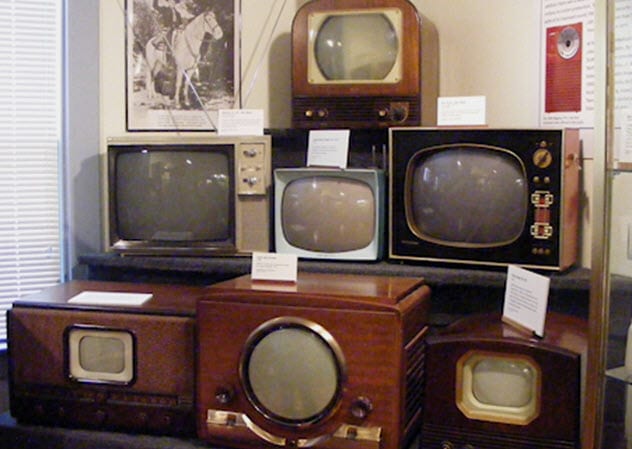
Today’s televisions are rectangular because movies created before the invention of the television were made for projection on a rectangular screen. Interestingly, the first televisions were either circular or rectangular with round edges. Early televisions were round because they contained round cathode ray tubes (CRTs). CRTs were round because they were cheaper to make that way.[6]
The first CRTs were not made for television but maintained their shape when televisions were invented. Rectangular CRTs came later, but they kept their round edges because it was difficult to make glass tubes with flat edges. Televisions became fully rectangular as manufacturers moved to liquid crystal displays and LED screens.
4 Why Doughnuts Have A Hole In The Center

The origin of the ring doughnut remains hotly debated despite its popularity. People have come up with all sorts of theories about how doughnuts ended up with a hole in the center. One says that a Native American man unwittingly made the first ring doughnut when he shot an arrow into the center of a pastry while aiming at a woman.
Another says that some bakers created the first ring doughnuts. Supposedly, when they added eggs to their dough, the final products were often uncooked in the center but overcooked at the edges. They created the holes to eliminate the gooey centers.[7]
However, most sources credit a sailor named Hanson Gregory (1832–1921) as the inventor of the ring doughnut even though they do not agree on a single story. One version says that Gregory invented the ring doughnut when he forcefully put some pastries he was eating through a spoke of his ship’s wheel in 1847.
According to another theory, he created the hole to make his doughnut lighter after six of his friends fell overboard because their pastries were too heavy. A third notion says that Gregory asked his mother to make the hole so that they could use lesser amounts of ingredients to make their doughnuts.
In a 1916 interview with The Washington Post, Gregory said that he created the first ring doughnut in 1858. He explained that doughnuts were made in twisting or diamond shapes at the time. They were called fried cakes and twisters.
The insides of the twisters and fried cakes were often uncooked long after their outsides were cooked, making them difficult to digest. Supposedly, Gregory invented the ring doughnut when he made a hole in the middle of a pastry before it was fried. That way, the inside and outside cooked at the same time.
3 Why Love Is Represented With A Heart Shape
 Love is universally depicted with a heart shape that does not look like a human heart. Several theories have been proposed for this, but the two most common ones involve the extinct silphium plant and the philosopher Aristotle.
Love is universally depicted with a heart shape that does not look like a human heart. Several theories have been proposed for this, but the two most common ones involve the extinct silphium plant and the philosopher Aristotle.
You have probably never heard of the silphium plant. It was popular among the Romans and Greeks who used it as a food seasoning, cough syrup, and contraceptive. They used it for contraceptives so much that they harvested it into extinction in the first century AD.[8]
Some historians say that the seedpod of the silphium plant looks like the heart shape we use to represent love today. As the Greeks and Romans probably used the silphium plant to represent love and sex at that time, its seedpod became the universal symbol of love.
Other historians believe that we use the heart shape for love because Aristotle and a writer named Galen described the human heart as a three-chambered structure “with a small dent in the middle.” Artists and scientists in the Middle Ages supposedly created the first heart symbol when they tried to draw the heart from the description in ancient books.
2 Why Light Bulbs Are Round

The first light bulbs were spherical. Today’s light bulbs are not spherical, but they still maintain a teardrop shape, just like their predecessors. That is, they are slimmer at their bases and wider at the center with a pointy tip.[9]
Early light bulbs were spherical because they produced light using filaments placed at their centers. A sphere is the most practical shape that allows a bulb to evenly deliver light across a certain area. Modern LED and compact fluorescent lamp (CFL) bulbs are not spherical but maintain the teardrop shape because makers want to stay with their traditions.
1 Why Coins Are Round
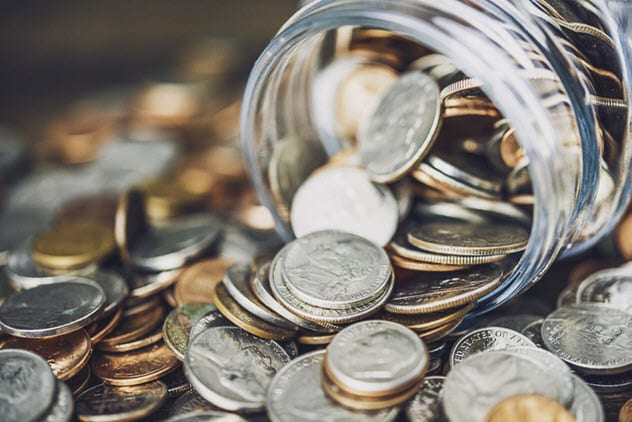
The earliest coins came in different shapes ranging from rectangles to circles with holes in their middles. The year in which the first coin appeared remains disputed even though historians agree that it was sometime around the sixth and fifth centuries BC.
Greek historian Herodotus wrote that the first coins were produced in Lydia, which was in today’s western Turkey. Herodotus added that the coin was made with electrum, a naturally occurring alloy of gold and silver. One account says that the coins were oval, while another claims that they were rectangular. Whichever is true, they were clearly not circles.
The Greeks and Romans later jumped on the coin fad. However, they made their coins round to prevent fraud. Coins of the day were made of valuable metals, and it was quite common for people to chip their corners off. They called this coin clipping. It was illegal and reduced the value of the coin.[10]
The Greeks and Romans created the round coin because it could be quickly spotted if it were ever clipped. Other accounts say that round coins also won over other shapes because they were easier to count, stack, and mint.
Read more about the surprising shapes in nature on 10 Surprising Shape-Shifting Organisms and 10 Beautiful Examples of Symmetry In Nature.
